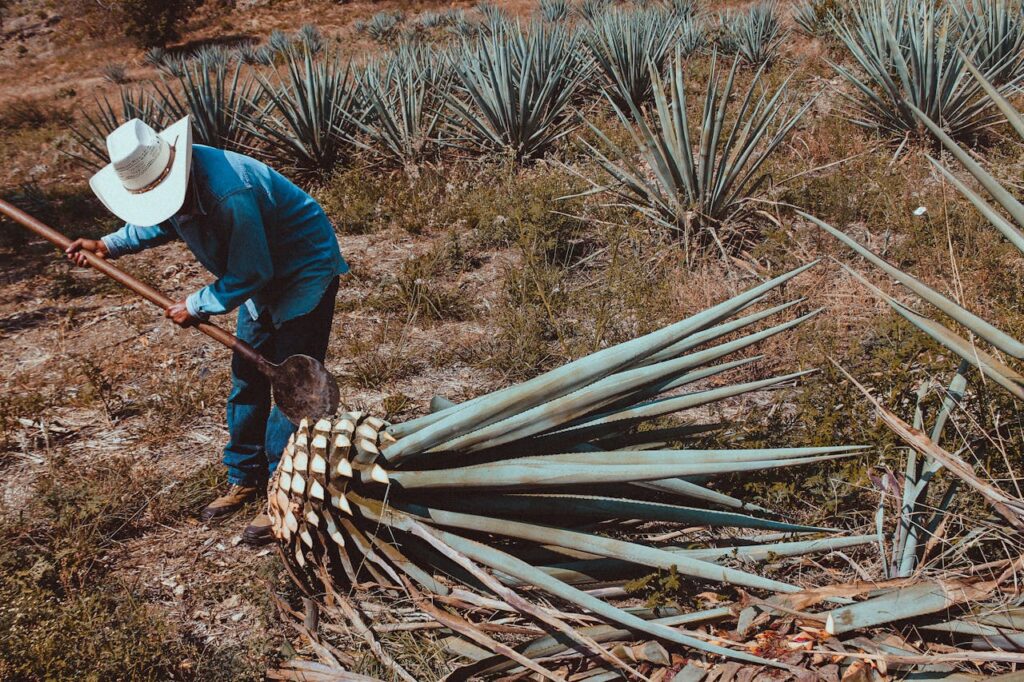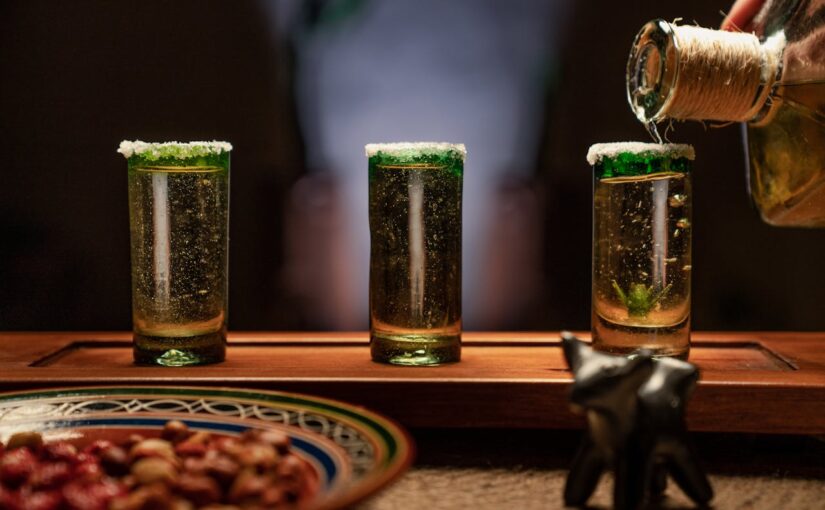Tequila is far more than just the base for a Margarita or a shot glass staple. It is a spirited expression of Mexico. Of its land, people, traditions, and culture. With centuries of history and a complex production process rooted in craftsmanship, tequila has evolved into one of the world’s most respected and versatile spirits. Yet, few truly understand its origins, what sets true tequila apart from its imitators, and the deep cultural tapestry it represents.
If you’re ready to go beyond the salt and lime, let’s dive into the world of tequila: what it is, where it comes from, how it’s made, and why it deserves our highest regard in both cocktails and sipping glasses alike.
The Essence of Tequila: What Is It, Really?
At its core, tequila is a distilled spirit made exclusively from the Weber blue agave plant, also known scientifically as Agave tequilana Weber, variedad azul. This striking plant, with its thick, fleshy, spiny leaves, isn’t a cactus as many believe, but a succulent. It’s actually more closely related to lilies, aloe vera, and onions.
While there are hundreds of agave varieties, only the blue agave is permitted in the production of tequila. That restriction is part of what makes the spirit so unique. To qualify as truly authentic, a tequila must be made from 100% blue agave. Spirits that include up to 49% of their sugars from other sources, like sugarcane, are classified as mixtos. However, true tequila lovers often seek out the purity and depth found only in 100% agave spirits, proudly labeled with terms like “100% de agave” or “puro de agave.”
This clarity in labeling isn’t just marketing. The Mexican government has put rigorous regulations in place via the Consejo Regulador del Tequila (CRT), ensuring the tequila in your glass lives up to high quality standards and proudly reflects its origin.
Where Tequila Is Born: A Flavor of Place
True tequila can only be made in designated regions of Mexico, following the rules of a denomination of origin much like Champagne in France or Parmigiano Reggiano in Italy. The majority of tequila production takes place in the state of Jalisco, particularly in and around the aptly named town of Tequila. A few other areas, including Nayarit, Michoacán, Guanajuato, and Tamaulipas, are also officially sanctioned.
Much like great wines, tequila is profoundly influenced by terroir, the intersection of climate, altitude, and soil. Blue agave grown in the highlands of Jalisco enjoys cooler evenings and an abundance of rainfall. The result is a sweeter, fruitier tequila, with floral and citrus notes that dance on the palate. In contrast, lowland tequilas are born from agave grown in volcanic soil. These often have earthier, spicier, and more herbaceous flavor profiles.
Different regions yield different expressions, but all of them offer a taste of the land and a connection to centuries-old agricultural traditions.

How Long Has Tequila Been Around?
The story of tequila begins in pre-Hispanic Mexico, where indigenous people fermented agave sap into a naturally alcoholic beverage called pulque. This milky, foamy drink played an important role in native religious rituals and daily life. However, the real transformation occurred in the 1500s, when Spanish conquistadors arrived, bringing with them the process of distillation.
Recognizing that the already-fermented agave sap could be distilled to make a stronger, more marketable spirit, the Spaniards introduced the tools and techniques necessary to create a stronger liquor. From this fusion of indigenous agricultural knowledge and Spanish distilling techniques, vino de mezcal, the ancestor of modern tequila, was born.
Centuries later, tequila has grown into a cultural symbol and global ambassador of Mexico, and despite technological advancements in production, it still honors the traditions from which it sprang.
From Field to Flask: How Tequila Is Made
The journey of tequila begins with the blue agave plant, which must grow for 7 to 10 years before it’s ready to harvest. This long maturation period is part of what makes tequila a spirit of patience and commitment. Unlike other crops that yield annually, agave fields sit untouched for nearly a decade before any returns on investment can begin.
When it’s finally time, the harvesting process is done by hand, by a skilled steward of the land known as the jimador. With a specialized, flat-bladed knife called a coa, the jimador precisely removes the plant’s towering flower stalk before stripping away its thick leaves to extract the heart, or piña. These piñas commonly weigh over 100 pounds and are the key to everything.
Once harvested, the piñas are either roasted in ovens or steamed in industrial autoclaves, which breaks their starches down into sugar. They are then crushed or shredded to release the sweet agave juice. This juice is fermented, either in wooden tanks or stainless steel vats, and finally distilled, most often twice, in traditional copper pot stills or modern column stills.
From here, some tequila goes straight into bottles as blanco, while other batches are placed in oak barrels to age and develop deeper complexity.
The Jimador: Guardian of Tradition
Behind every great tequila is the jimador, a fieldworker with an intimate understanding of the agave plant’s life cycle. Knowing precisely when a plant is ripe is more art than science. The jimador is tasked with identifying the perfect moment for harvest and executing the physically demanding task with speed and accuracy.
This isn’t work for the faint of heart. Between scorching heat, venomous insects, prickly leaves, and backbreaking labor, the jimador’s job is one of respect and endurance. Their commitment to preserving tradition is what ensures the tequila on your shelf is worthy of admiration.
Tequila vs. Mezcal: What’s the Difference?
There’s a common saying among connoisseurs: all tequila is mezcal, but not all mezcal is tequila. That’s not just clever wordplay. It’s true by nature and by regulation.
Tequila can only be made from blue agave, while mezcal can come from over 25 different varieties of agave, such as Espadin, Tepextate, Tobaziche, and the elusive Tobala. Tequila is typically produced in specific areas like Jalisco, but mezcal is most famously made in Oaxaca. And often in far more rustic and traditional ways.
One dramatic difference is in the cooking process. While tequila piñas are steamed, mezcal piñas are roasted in underground pits lined with hot stones and wood, infusing the plant with a distinctive smoky flavor. This gives mezcal its deep, rugged edge. A taste that connects directly to the earth and fire that birthed it.
Each mezcal is a unique expression of place, technique, and agave variety. It is often handcrafted in small batches by families who’ve passed down their methods for generations. In contrast, tequila generally represents a more modernized approach, although artisanal methods still thrive among traditional producers.
Styles of Tequila: From Fresh to Refined
Tequila comes in several distinct styles, and each offers something special. Understanding the differences can completely transform the way you enjoy and mix tequila.
- Blanco (Silver/White)
Unaged, or aged for less than two months in stainless steel or neutral oak barrels, blanco tequilas are clean, bright, and the purest expression of agave flavor. You’ll find bold vegetal notes, clean minerality, citrus, pepper, and hints of herbs. Blancos are staples in cocktails and bring a refreshing energy to mixers and fruit-forward drinks. - Reposado (Rested)
Rested in oak barrels for two months to one year, reposados strike a balance between the agave’s natural brightness and the complexity lent by barrel aging. Here, you’ll get flavors like vanilla, baking spices, and a soft roundness. Reposado is a go-to for a richer, deeper Margarita or for more contemplative sipping. - Añejo (Aged)
Aged from one to three years, añejo tequilas are rich, smooth, and layered with caramel, oak, honey, and spice. These are sipping tequilas meant to be enjoyed neat or in sophisticated, spirit-forward cocktails. - Extra Añejo (Extra Aged)
The newest category in tequila, created in the early 2000s, extra añejos are aged more than three years. These top-tier tequilas are dark, complex, and luxurious, often rivaling fine cognacs and single malt scotches. Expect notes of butterscotch, toffee, old wood, and deep spice. Given their price tags and deep character, they’re best reserved for sipping on special occasions.
How Should You Enjoy Tequila?
While many people are introduced to tequila through shots or sweet, frozen drinks, the spirit offers far more elegance and versatility. Blancos work beautifully in citrus-based cocktails like Margaritas or Palomas. Reposados lend structure and warmth for stirred or shaken drinks with rich flavors. Anejos and extra anejos are ideal for sipping slowly, neat or with a single ice cube, and can even stand in for whiskey in high-end cocktails.
Each bottle tells a story of a region, a method, and a family tradition. From earthy, herbaceous lowland expressions to highland tequilas bursting with floral citrus notes, every pour is a celebration of time, place, and craft.
In Summary
Tequila is more than just a party drink. It’s a cultural icon, a labor of love, and a spirit with stories etched into every drop. From the hands of jimadores working under the hot Mexican sun, to the oak barrels infusing years of character, to the clink of glasses across the world, tequila invites us to slow down and savor both its flavor and its heritage.
The next time you pour a shot or shake up a cocktail, remember: You’re not just enjoying a drink. You’re taking part in a centuries-old tradition that reflects the heartbeat of Mexico. Salud!
Images: Los Muertos Crew, Walter Alejandro
